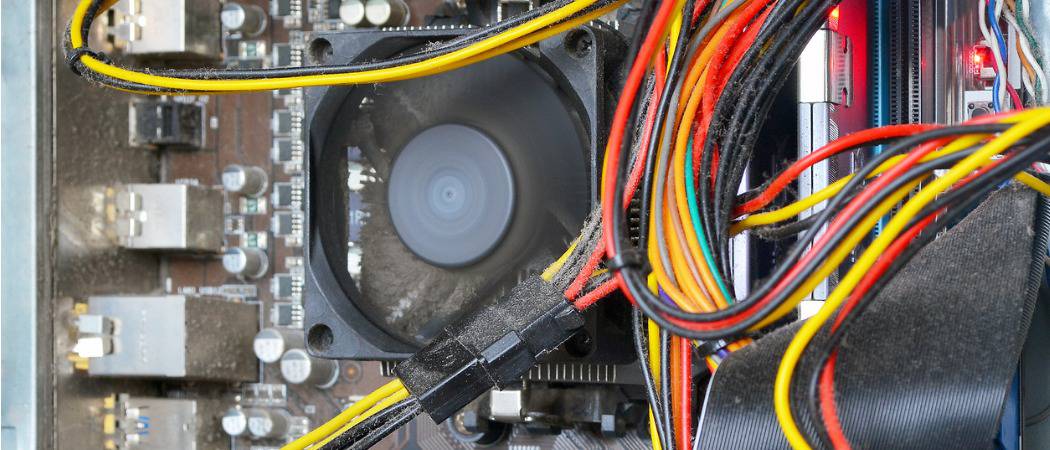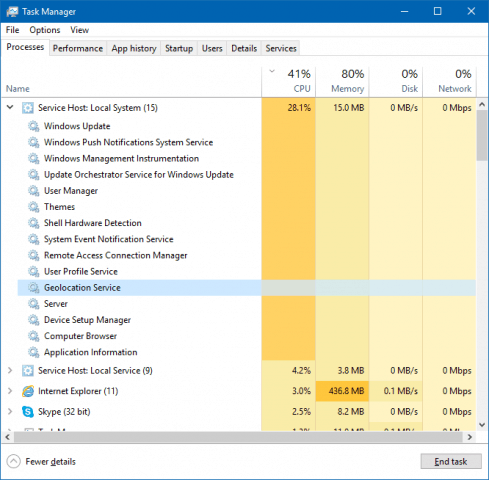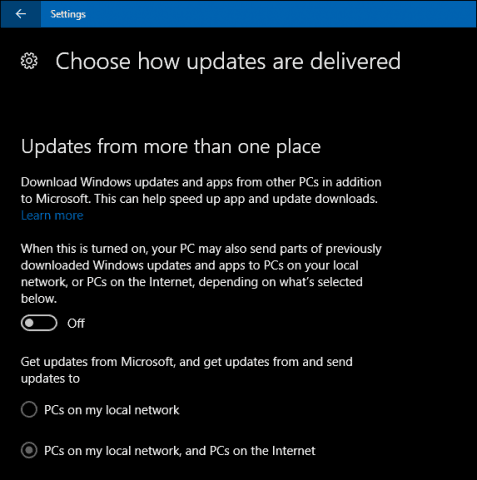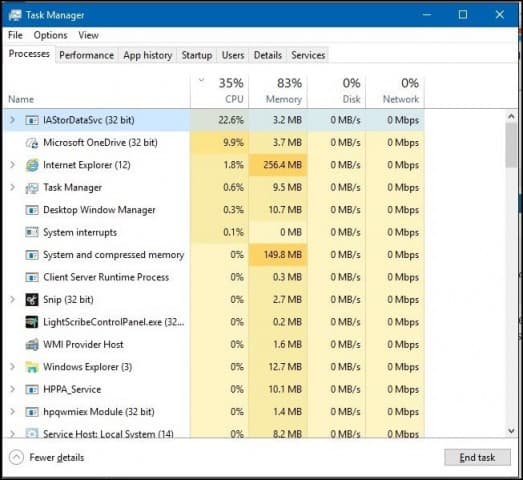
Since upgrading to the Windows 10 Anniversary Update, I detected a strange occurrence, and my CPU Fan was always spinning up. Here are tips for reversing that.
Since upgrading to the Windows 10 Day of remembrance Update, I detected a strange occurrence, and my CPU Fan was forever spinning skyward. I ignored IT for some time now, but it started getting annoying over the then a couple of weeks. It became quite a touch regarding possible price to components in the system overheating. My suspicions focused on a possible process accessing more CPU cycles than usual. The solutions given here power vary contingent your configuration, simply they are deserving a try if you are experiencing a connatural job.
Disable Processes Causing CPU Sports fan to Stay Constant
First, launch Task Manager, press Windows cardinal + X > Task Handler, then click the Processes tab. Click the CPU column to sort applications and processes by CPU cycles. Down the stairs, I detected the System Host Process regularly accessed CPU cycles at 30%, sometimes leaving as high as 36%. Expanding the System Host Process tree reveals rather some services running in the background. This was a trial and error; I detected Geolocation Service was running, so I decided to disable IT first. Surprisingly, it worked, and the CPU fan stops revving in the lead. Regrettably, Geolocation restarted again. I proved a few multiplication spell close the following services: Gimmick Setup Manager, Computing machine Browser, Windows Update; none of it made any difference.

Background Apps
It became apparent no of these services were contributing to the squeaky Mainframe cycles. Because I am on a metered Internet connection, I disenable many background apps and services to preserve ambulant data. Some users experiencing high CPU usage in Windows 10 have tried disabling some services such as Sync Settings and background apps. Click Start > Settings > Privacy > Background apps. Recommended background apps you can turn inactive include Weather, OneNote, Facebook, and Chitter if you have those installed; I must admit, these didn't make much of a difference either, but they might sour for you.

Scheme Features
I decided to seek any expert advice and was told to disenable the Host Work for Setting Synchronization. You can easily find information technology under Task Manager > Users tab; expand your user account tree, select the Legion Swear out for Setting Synchronization, then click Disable. Regrettably, this expert advice didn't work either, but information technology turns intent on be a popular declaration for many users experiencing this problem with squeaky CPU cycles.

Scheme Host Process
As a unalterable resort, I decided to check the Organisation Host Process tree again because I matte this is where the problem exists. I detected Windows Update was catalogued as a run service. Although I have Windows Update disabled because I am happening a metered connection, I decided to look there. Nothing unusual; I have it set for Defer Feature Updates. Out of curiosity, I checked under Prefer how updates are delivered. Noticing I had the option to get updates from more 1 place enabled, I tried my luck and turned it off. What do you know, the problem finally disappeared? Since writing this article, I have non heard my CPU sports fan rpm improving.

Hardware Drivers
This does not isolate other factors that might contribute to excessive Central processing unit utilisation. About users have reportable sync settings located under Accounts can too spark this behavior. Modifying what gets synced can slim down the impact of the Processor fan leftover constant. Another process I notice triggers the C.P.U. fan is IAStorDataSvc. IAStorDataSvc is associated with the Intel Rapid Storage Driver. When I initially upgraded to Windows 10 in 2022, I had to disable information technology each time I started Windows 10 to prevent information technology from triggering the CPU Fan. In a recent forum post, we detailed issues users were experiencing with IAStorDataSvc causing stability issues. With Windows 10 providing built-in support for AHCI, in that location is no need to install OR keep open IRST. So, if you bechance to equal experiencing freezes on the Windows 10 Day of remembrance Update, 1607, uninstalling it might declaration the problem.

Updating chipset drivers have also been reported to remedy the problem. Your network web browser can represent a factor, too; Mozilla Firefox is notorious for causation the CPU fan to spin awake. Check up on your browser's add-ons, then disabling ones you don't need mightiness help. Too, reducing the number of tabs you have open, especially media-based websites, might assist. Switching web browsers might be an option if you are perpetually experiencing this with a particular web browser.
If you have "Hey, Cortana" revolved on, and that is another perpetrator, you can probably become it sour. Other variables can include even application add-ons. When I ill-used a Microsoft Word supplement, Grammarly triggered the CPU Fan, which remained constant even later on exiting the application. There International Relations and Security Network't a silver bullet for this problem; hopefully, if you are experiencing a similar issue, hard several of these suggestions might help ease the job.

Lenoo Fan Rapidly Turnng Fan on and Off
Source: https://www.groovypost.com/howto/stop-whats-revving-your-cpu-fan-constantly-in-windows-10/